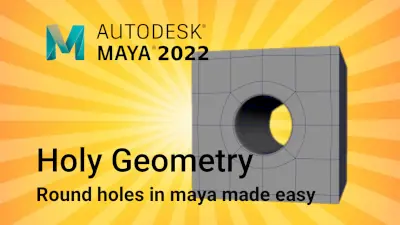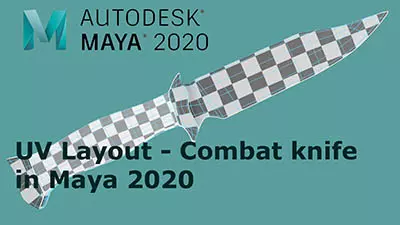Introduction to Maya - Rendering in Arnold
This course will look at the fundamentals of rendering in Arnold. We'll go through the different light types available, cameras, shaders, Arnold's render settings and finally how to split an image into render passes (AOV's), before we then reassemble it i
#
1
10-06-2012
, 11:13 PM
Registered User
Join Date: Jun 2012
Join Date: Jun 2012
Posts: 9
Planar does not follow nurb curve accurately...Grrr
I'm new to Maya and ive been stuggling with Maya's nurbs planar for some time now.
In the object below I am trying to close it so the object has sides and a closed top and bottom. My problem is that no matter what planar settings I tweak the model does not follow the curve accurately and so has horrible gaps on the edges.
Anyone got any ideas as to why its doing this? I've been scratching my head for days now wondering how something that should be so simple isnt capping the model right.
#
2
11-06-2012
, 12:10 AM
Registered User
Join Date: Jun 2008
Join Date: Jun 2008
Location: Los Angeles, CA
Posts: 229
--
Peter Srinivasan
Producer
#
3
11-06-2012
, 01:48 AM
Registered User
Join Date: Jun 2012
Join Date: Jun 2012
Posts: 9
Its exactly the same in the rendered frame.have you tried rendering? sometimes planar displays weirdly for me in the viewport, but renders fine...
Its not this particular design too, it shows up in pretty much anything thats not a circle and has sharp corners. Is no one else getting this?
#
4
11-06-2012
, 02:18 AM
Events Team at Wargaming.net
Join Date: Dec 2008
Join Date: Dec 2008
Location: Crystal Lake, Illinois
Posts: 486
#
5
11-06-2012
, 03:01 AM
Registered User
Join Date: Jun 2008
Join Date: Jun 2008
Location: Los Angeles, CA
Posts: 229
--
Peter Srinivasan
Producer
#
6
11-06-2012
, 07:52 AM
(1) What you see in the display is not the same as what you will get in the render.
To speed up the UI display maya sets the surface curvature precision to 4. To see this select the trimmed surface and go to the attributes tab and twirl down the NURBs Surface Display and you will see "Curve Precision" and "Crv Precision Shaded".
By increasing these values you can smooth out what you see in your UI at the cost of slower UI speeds. If you crank these values to high you can crash your system so use with caution. I generally never touch these unless I just want to check things and then I set them back to the defaults (you can do this by just pressing the 3-key again). To permanently change them you do it in Windows>Preferences.
(2) Now the second thing is that when you render those precision values above have no effect and in most cases your renders will not have the gaps.
However, if your renders have facets then you need to change the render tessellation settings. You can do this in two different ways. If you are rendering with maya software then go to the tessellation tab in the attributes for the surface and play with the simple or advanced tessellation settings.
If you are rendering with MR create a NURBs Tessellation Surface approximation node, set it to spacial, and then adjust the length and max subdivisions to increase the render tessellation based on the camera distance. I prefer this method as once you create an approximation node you can assign it to all your nurbs surfaces and get good results.
With the maya software tessellation settings you have to set the tessellation for each surface individually and the settings are fixed regardless of camera distance. This is why I would never render NURBs using the maya software renderer as a complex model would take forever to manually tweak all the tessellation settings of lots of surfaces. As a note you can also create approximation nodes for poly surfaces and so I prefer using mental ray over maya software render for polys as well.
If this is all confusing to you then respond and I will make a short video to demonstrate what I have said above.
-Rick
NOTE: You can also reduce render faceting by rebuilding either your curves or surfaces to have more spans. Of course at the expense of render time.
"If I have seen further it is by standing on the shoulders of giants." Sir Isaac Newton, 1675
Last edited by ctbram; 13-06-2012 at 12:51 AM.
#
7
11-06-2012
, 01:50 PM
Registered User
Join Date: Jun 2012
Join Date: Jun 2012
Posts: 9
Is there an alternative, less tedious way to cap an object like this using something other than planar?
#
8
11-06-2012
, 11:56 PM
I'll record something to help you out.
"If I have seen further it is by standing on the shoulders of giants." Sir Isaac Newton, 1675
#
9
12-06-2012
, 01:42 AM
I could seriously have to make a couple 20 - 30 minutes videos to properly cover the proper ground rules for nurbs.
But in any event I did manage to talk about controlling the screen display vs render tessellation and how to control it for both maya software and the MR renderer.
I hope it helps you out.
--Rick
It rendering now and I may have to split it into two parts for youtube. I place the link(s) here when it's uploaded.
"If I have seen further it is by standing on the shoulders of giants." Sir Isaac Newton, 1675
Last edited by ctbram; 12-06-2012 at 07:15 AM.
#
10
12-06-2012
, 02:08 AM
https://youtu.be/VGVIC1cJOmc
"If I have seen further it is by standing on the shoulders of giants." Sir Isaac Newton, 1675
#
11
12-06-2012
, 05:36 PM
Registered User
Join Date: Jun 2012
Join Date: Jun 2012
Posts: 9
Really detailed video. Thank you!Okay it's uploading now if youtube allows it here is the link....
https://youtu.be/VGVIC1cJOmc
#
12
12-06-2012
, 11:00 PM
I wanted to cover the pit falls using maya nurbs tools which are very primitive and so little things like not rebuilding to uniform parameterization can cause unpredictable results and so people get frustrated with nurbs and just give up on trying to take advantage of them.
But there was just to much to cover and since I make these vids off the top of my head I realized I had to speed up and leave some things possibly unclear.
But I hope it helped and you are getting better results now.
"If I have seen further it is by standing on the shoulders of giants." Sir Isaac Newton, 1675
Posting Rules Forum Rules
Similar Threads
Issue on applying extrude to a curve with a NURB circle as reference
by kojysys23 in forum Maya Basics & Newbie Lounge replies 1 on 08-01-2014
render a nurb curve
by rejh2 in forum Maya Basics & Newbie Lounge replies 3 on 05-03-2007
How to make a skeleton follow a curve
by Fuwat in forum Animation replies 1 on 04-11-2005
loft doesn't follow the profile curve
by parka in forum Maya Basics & Newbie Lounge replies 5 on 20-10-2005
Bending an object to follow a curve?
by Foghorn in forum Maya Basics & Newbie Lounge replies 6 on 30-08-2005
Topics
Free Courses
Full Courses
VFX News
How computer animation was used 30 years ago to make a Roger Rabbit short
On 2022-07-18 14:30:13
Sneak peek at Houdini 19.5
On 2022-07-18 14:17:59
VFX Breakdown The Man Who Fell To Earth
On 2022-07-15 13:14:36
Resident Evil - Teaser Trailer
On 2022-05-13 13:52:25
New cloud modeling nodes for Bifrost
On 2022-05-02 20:24:13
MPC Showreel 2022
On 2022-04-13 16:02:13








